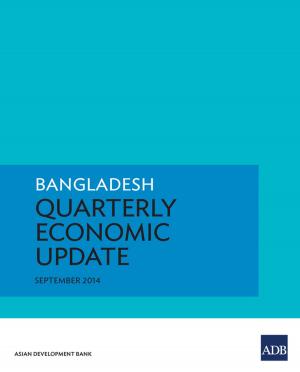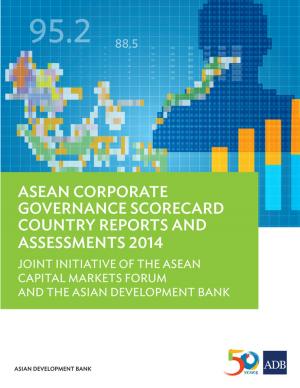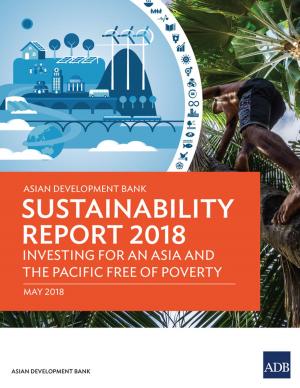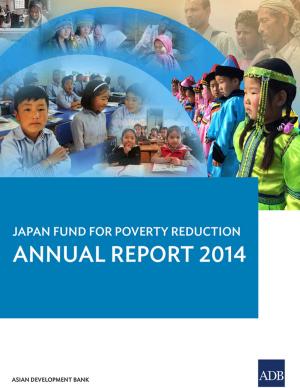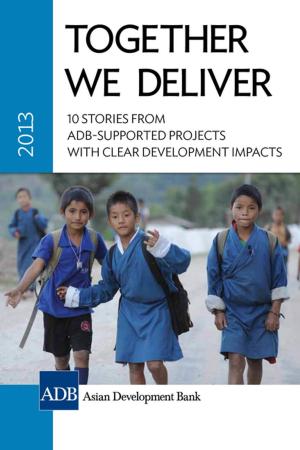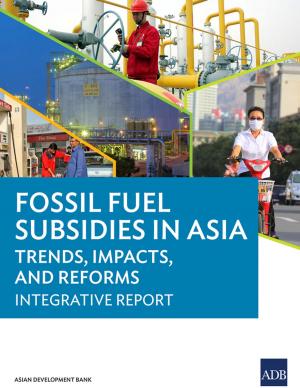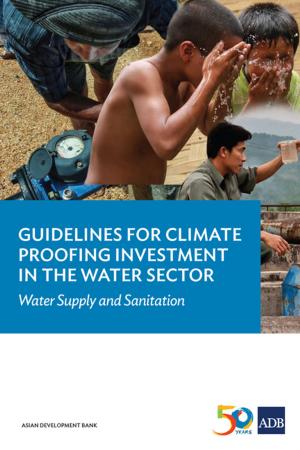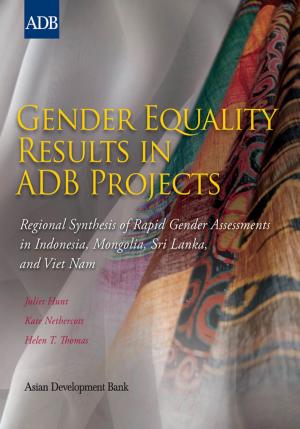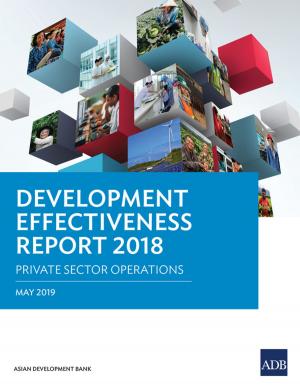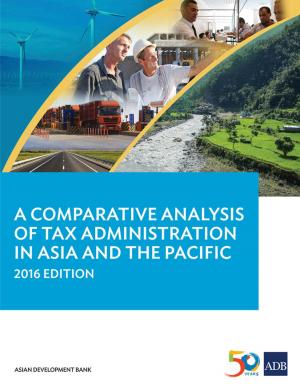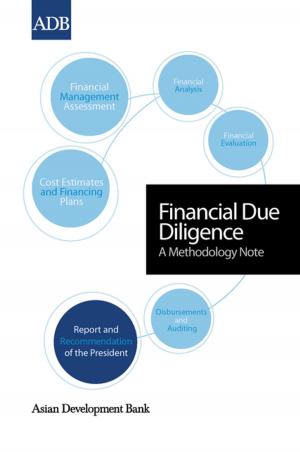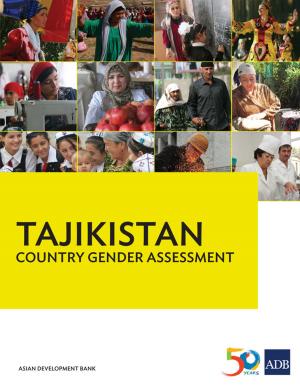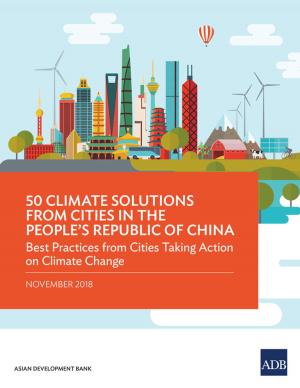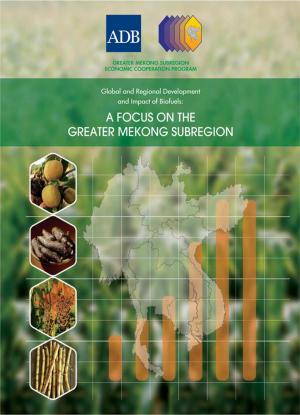Development Asia—The Hunt for Jobs
August 2009
Nonfiction, Reference & Language, Education & Teaching, Educational Theory, Educational Reform, Administration| Author: | Asian Development Bank | ISBN: | 9789292574246 |
| Publisher: | Asian Development Bank | Publication: | August 1, 2009 |
| Imprint: | Asian Development Bank | Language: | English |
| Author: | Asian Development Bank |
| ISBN: | 9789292574246 |
| Publisher: | Asian Development Bank |
| Publication: | August 1, 2009 |
| Imprint: | Asian Development Bank |
| Language: | English |
While economists and government officials assess the impact of the global economic downturn on Asia, millions of laid-off workers and recent college graduates face the real guesswork of figuring out how they are going to make a living. Indeed, lines of job seekers are lengthening across Asia, as the global crisis causes export markets to shrink and the high-flying, export-driven economies that feed them to skid. This edition of Development Asia examines the impact of the global economic crisis on Asia's labor markets, starting with an overview from William Branigin, a journalist for The Washington Post and the newspaper's former Southeast Asia bureau chief for more than a decade. More than the resolve of individuals, the crisis is testing the ability of nations and multilateral organizations to improve living standards across the continent. This issue goes on to follow the unemployed into the informal sector—the legion of street vendors, pedicab drivers and other largely unregulated workers who account for upwards of 50% of the economic activity in some countries. For years, this group has acted as a social safety net for the unemployed in Asia: people traditionally took to the streets to earn when they lost their more formal jobs or to earn more for their families during off hours. Bangkok-based journalist Karen Emmons finds this tradition coming under strain in the current crisis. In other stories, Bronwyn Curran, a journalist with extensive experience reporting from Pakistan, examines the link between political instability and high unemployment rates among young men. Meanwhile, writer James Hutchison visits the garment factory district to find women workers particularly hard-hit by the global economic downturn, and Bruce Heilbuth documents the suffering of the millions in Asia who rely on remittances—payments sent home by relatives working overseas—as those sums shrink. In stride with the special report on labor and employment in Asia, this issue looks at innovative trends in development: a program started in Latin America, now replicated globally, offers conditional payments to poor families if they educate their daughters, or vaccinate their children, or do other specific tasks. These conditional cash transfers, as they are called, are controversial in some quarters, but they have produced impressive results. This issue also explores the issue of private schools for the poor. Long a privilege of the wealthy and middle class, an increasing number of nongovernment schools serving poor children can be found around Asia. In our From the Field section, New Delhi-based writer Neeta Lal talks to Bindeshwar Pathak, the curator of a toilet museum. The interesting and humorous museum highlights Mr. Pathak's pioneering work in sanitation for the poor in India.
While economists and government officials assess the impact of the global economic downturn on Asia, millions of laid-off workers and recent college graduates face the real guesswork of figuring out how they are going to make a living. Indeed, lines of job seekers are lengthening across Asia, as the global crisis causes export markets to shrink and the high-flying, export-driven economies that feed them to skid. This edition of Development Asia examines the impact of the global economic crisis on Asia's labor markets, starting with an overview from William Branigin, a journalist for The Washington Post and the newspaper's former Southeast Asia bureau chief for more than a decade. More than the resolve of individuals, the crisis is testing the ability of nations and multilateral organizations to improve living standards across the continent. This issue goes on to follow the unemployed into the informal sector—the legion of street vendors, pedicab drivers and other largely unregulated workers who account for upwards of 50% of the economic activity in some countries. For years, this group has acted as a social safety net for the unemployed in Asia: people traditionally took to the streets to earn when they lost their more formal jobs or to earn more for their families during off hours. Bangkok-based journalist Karen Emmons finds this tradition coming under strain in the current crisis. In other stories, Bronwyn Curran, a journalist with extensive experience reporting from Pakistan, examines the link between political instability and high unemployment rates among young men. Meanwhile, writer James Hutchison visits the garment factory district to find women workers particularly hard-hit by the global economic downturn, and Bruce Heilbuth documents the suffering of the millions in Asia who rely on remittances—payments sent home by relatives working overseas—as those sums shrink. In stride with the special report on labor and employment in Asia, this issue looks at innovative trends in development: a program started in Latin America, now replicated globally, offers conditional payments to poor families if they educate their daughters, or vaccinate their children, or do other specific tasks. These conditional cash transfers, as they are called, are controversial in some quarters, but they have produced impressive results. This issue also explores the issue of private schools for the poor. Long a privilege of the wealthy and middle class, an increasing number of nongovernment schools serving poor children can be found around Asia. In our From the Field section, New Delhi-based writer Neeta Lal talks to Bindeshwar Pathak, the curator of a toilet museum. The interesting and humorous museum highlights Mr. Pathak's pioneering work in sanitation for the poor in India.

